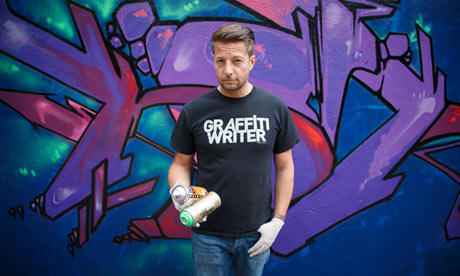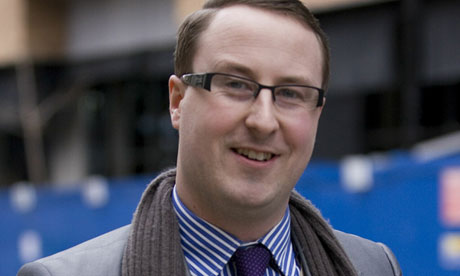Late last Saturday night, gunmen dressed in paramilitary uniforms entered Base Camp at Nanga Parbat, Pakistan's second-highest peak, and murdered ten foreign mountaineers and a Pakistani cook. A spokesman for an Islamist militant group later claimed credit for the killings. It was the first time climbers had been targeted in that manner in Pakistan. The victims included three Ukrainians, three Chinese, two Slovaks, a Nepali, a Pakistani, and a Lithuanian named Ernest Marksaitis.
(Related: "Pakistan Attack Casts Light on Troubled Climbing Zones")
Sher Khan, a Pakistani climber, returned to Base Camp at Nanga Parbat at about two o'clock on Saturday afternoon, June 22. He'd been suffering from the effects of high altitude at Camp 1 and wanted to rest. Besides the other mountaineers at Base Camp, many of whom were also sick, there were about a dozen members of the staff, mostly local people. After a cup of light soup, he climbed into his sleeping bag, still not feeling well.
In this interview, he tells National Geographic what happened on the mountain that night.
What was the first sign of trouble?
I woke up suddenly around 9:30 [in the evening]. I heard noises around my tent. What's going on, I thought. Is somebody fighting or what? I opened my tent flap a little and saw a person carrying a Russian Kalashnikov about 20 meters away. He was wearing a local camouflage uniform.
Then right in front of my tent I saw someone with a terrorist. His name was Ernest, a climber from Lithuania. And he was saying, "I am not American. I am not American."
From another direction I heard, "Go out. Go out. Go, go." They were trying to pull the Chinese out from their tents. "Taliban! Al-Qaeda! Surrender!" They were trying to tell the foreigners to surrender.
Then I saw two people coming toward my tent with a huge Kalashnikov and some knives in their hands. I was trying to hide. The muzzle of the gun came inside my tent and one person said, "Go! Go!" I said, "Look, I'm Pakistani. I'm from Hunza. I am Ismaili. Please."
I tried to recall the Kalima prayer. They said, "Come out!" They were speaking Urdu [spoken in Pakistan] mostly. Then sometimes Pashto [spoken in Afghanistan]. A few words in Shina, the local language. I tried to get out of the tent and they suddenly said, stop! "Do you have money?" I said, yes, I have a little. They said, okay get out the money. So I tried to get back into the tent to get the money, but they kicked my head with their boots and pulled me out of the tent.
They said, 'We don't need you to collect the money. Just go.' They pointed this gun to my head and took me to this line of other people and tied me with a rope. What I saw then was eight or nine people tied with a rope.There some Pakistani people also. Some Ukrainian people. This poor Ernest was also tied. And one Nepali was also tied. And of course, it was my time turn for them to tie me. They put me next to a Ukrainian guy on the far right side.
They took a little time to bring out more people. They went to each and every tent. "Taliban, Al-Qaeda. Surrender." They were looking for foreign tourists. They pointed a gun at me and a camp cook and said, "We know you can speak English. Ask them who has money in their tents." They threatened the climbers. "If we find money in your tent that you are hiding, we are going to shoot you." Everybody was scared. We all said, yes, we have money. The foreigners said, yes, we have Euros. Yes, we have dollars. And one by one they took climbers to their different tents and collected the money.
Then they asked for satellite phones. "Who has Thuraya phones?" The climbers said "yes, we have Thuraya phones, we have walkie-talkies." Again they took them to the tents and collected the Thuraya phones. But this time they destroyed all the phones and walkie talkies. Some they shot with Kalashnikovs. Some they destroyed with stones. Whatever electronics they found, like laptops, solar panels, they destroyed them with stones and with their feet.
All this time I was begging them, please, we are Muslim, Ismaili from Hunza. We are Pakistanis. Why are you doing this?
Then suddenly one person came to me and said, okay, if you are a Muslim, tell me this, this, and this about morning prayer. But we Ismaili say a different prayer. So I was helpless and kept quiet. Then another person said to the first one, "Don't you know that these Ismaili people from Hunza don't offer the same prayer?" So this ugly man went away from my face.
Then somebody said, "Okay, let's separate these three people from Hunza from the rope." So they released us, but told us, "Don't try to look up. Stay on your knees."
Then one person told the rest of the row, the Ukrainian people, the poor Nepali and the Pakistani guy, Chinese people, to turn their faces in the other direction. So that they could shoot them, you know. But I was thinking, maybe they are not going to shoot them. Maybe they are robbers. They've got the money and everything. Maybe they are going to just go away.
But unfortunately, when they started to move them in opposite directions, I was just stunned. I couldn't see what was going on. I was on my knees, bent down, holding my body.
Then suddenly I heard the sound of shooting. I looked a little up and what I saw was this poor Ukrainian guy, who had been tied with me, I saw him sitting down. Then after that moment, the shooting started in bursts. Three times. Brrrr. Brrrr. Brrrr. Three times like that. Then the leader, this stupid ugly man, said, "Now stop firing. Don't fire anybody." Then that son of a bitch came in between the dead bodies and he personally shot them one by one. Dun. Dun. Dun. Every body he shot down. And then afterward we heard slogans, like Allahu Akbar. Salam Zindabad. Osama bin Laden Zindabad. And one stupid person said, "Today these people are revenge for Osama bin Laden."
Then they were about fifty feet away and gathered for a while. Then they dispersed from that point downward.
Suddenly it was totally quiet. It was a very silent moment. We waited for a little while more, and we rushed to the kitchen where our cook found a knife and our hands were finally freed. I tried to find a radio in my tent. I found two walkie talkies and tried to contact my team mates at Camp 2. I said, please, Camp 2, this is an emergency, can you hear me? But everybody must have been sleeping. I went to each and every tent looking for a Thuraya.
Then my Hunza friends said, look, if they come again, they're going to kill us. We need to go somewhere safe. So we tried to go toward Camp 1, but we didn't have the right clothes or shoes because they had pulled us from our sleeping bags. But we were really in terror. So the three of us climbed about 300 meters up the mountain to where we could look down on Base Camp. It was about one o'clock and we found a kind of cave. We tried to hug each other to get a little heat. We stayed there all night. We kept trying to contact Camp 2, but I heard nothing until 7:30 in the morning. I kept my radio on. Suddenly I heard one of my friends, Karim. I told him what had happened, that people had died. I was crying.
Karim contacted Nazir Sabir, a famous climber, who said that the Army was already on the move. They were on the way with helicopters. So don't move until they land at Base Camp, he said.
After the gunmen left Base Camp, did anyone check to see if the climbers were all dead?
At that moment, it was very hard to stay in that place. To get closer to the bodies. It was a really hard moment. But some people, including myself, heard a strange noise from the body of one person. As if he was still alive. Others were completely quiet. One person, he was doing something like snoring. We heard that sound for a little while before we left that camp. But when I asked some local people, staff, who were tied in a tent nearby, they said, you know, we were hearing that snoring sound until maybe two o'clock in the morning. It could be that he was alive. I don't know.
It sounds just horrible.
You know, to this day, I can't sleep. It was a week ago. Afterward the Army took me and some of my friends for interrogation. They asked a lot of questions. What kind of people were they? What kind of accent did they have? I answered a lot of questions. Now I can't sleep. But if I do, I wake up suddenly with any noises. It's also difficult for me to go into a room. Because I feel like it's a tent and somebody is going to come get me at gunpoint. It's very difficult.
Aleksandra Dzik, a young climber from Poland, was also on the mountain that night. But she, like 30 or so other mountaineers, was higher on the peak at Camp 2 when the killings occurred. As leader of the International Nanga Parbat Expedition 2013, Dzik was helping her team of 20 prepare for an ascent of the peak when she heard the news. Ernest was a member of her team.
In this interview, she tells National Geographic what she saw and heard on the mountain.
How did you learn of the attack?
It was about 6 in the morning and we heard about it from Karim Hayat, a Pakistani climber who had a tent near us at Camp 2. He'd gotten a call from his climbing partner, Sher Khan, who was at Base Camp. Khan said the Taliban had tied him up and carried him out of his tent and stood him up right next to the people who were shot. But in the end they didn't shoot him. He was in shock. When he managed to untie his hands, he called Karim and warned him not to come down from Camp 2.
Of course, when we heard what had happened, we tried to get in touch with Ernest, the only member of our team who was still at Base Camp. Ernest had decided to rest for a few days, because he was sick. He had stomach problems. But he didn't reply. We were hoping maybe he had lost his radio and escaped. Unfortunately, it wasn't true. Other expeditions were also calling their members at Base Camp, but only getting silence.
We decided to go back down to Base Camp. By the time we arrived, the Army was already there and the bodies had been taken away.
It must have been a shock.
We couldn't believe it. We are climbers. Every one of us has lost friends in the mountains. But it was always by the power of nature. It's a game we all play. We accept the risk.
But here the deaths at Base Camp were caused by people. It was just terrible.
Someone said to us, I will show you the place where they were all put together, taken from their tents, and shot dead. There was blood on the grass. It was the most terrible moment. There was also white down, because they had been wearing down suits. And there were shells from the gun.
Before the attack, a Slovakian climber at Camp 2 had also been having stomach problems. So his climbing partner, another Slovakian, and his team leader, a Ukrainian, decided to take him back down to Base Camp. They thought that would be the safest place for a sick person, but in fact they all went to the one place that was the most dangerous, and they were killed there.
That night we were quite afraid. We put several tents together with three or four people in each small tent to be close together.
The next day we were evacuated by Army helicopters to an army base. Then an Army aircraft took us to Islamabad, where our agencies and embassies got us a hotel.
Do you feel safe now in Pakistan?
You know, what can we do? We are quite scared. More anxious than before. When we go out in the city, we are more careful how we dress, how we look.
Before when we came to Pakistan, we got used to the terrorism in this country, where people unfortunately are killed every day. But we always felt that it didn't concern us, that it was the problem of the Pakistanis and we were guests in their country. We believed that we were untouchable.
Now we do not feel safe on the streets, but we try to behave normally any way. Because it's the only thing we can do against terrorism. To live normally. Not to give terrorists what they wantâ€"to make us hide.







![[image]](http://si.wsj.net/public/resources/images/MK-CD929_SUMMER_G_20130611173226.jpg) Michal Czerwonka for The Wall Street Journal
Michal Czerwonka for The Wall Street Journal